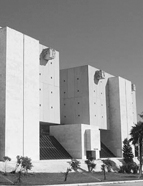

................................
The first half of the 18th century was marked by a significant increase in the production of tools for accessing information. The period between 1713 and 1742, during the tenure of the guarda-mor João Couceiro de Abreu e Castro, was particularly productive, especially regarding the creation of indexes for various royal chanceries. Moreover, with the establishment of the Royal Academy of Portuguese History, the consultation of documents increased significantly due to the need to copy those of interest for the academics. This demand was instrumental in driving the production of indices and inventories. However, the creation of a comprehensive research tool to control and identify the archive's collection only materialised in 1776, under the guarda-mor João Pereira Ramos de Azeredo Coutinho, with the Inventário dos livros, maços e documentos que se guardam no Real Archivo da Torre do Tombo [Inventory of the books, bundles, and documents held in the Royal Archive of the Torre do Tombo]. By this time, the House of the Crown Archive housed 26 cabinets, along with 15 for chancery books and three for indexes, reflecting not only the growth of the collection but also a reorganisation in new forms after the earthquake. At the end of the 18th century, José Pedro Miranda Rebelo, a clerk at Torre do Tombo, produced a report titled Extracto do Real Archivo da Torre do Tombo (Rebelo, 1904 [post-1776]), which describes the state of the archive and provides insight into its evolution over time. Notably, the report highlights the absence of regulations as a cause of "innumerable abuses" and the reason for decisions being left to the discretion of the guardas-mores (Rebelo, Idem, pp. 35-36). The first official regulations for the Crown Archive were only established in 1802, in a document titled Ordens que se devem observar neste Real Archivo daqui em diante [Orders to be observed in this Royal Archive henceforth].
This work is financed by national funds through FCT - Foundation for Science and Technology, I.P, in the scope of the projects UIDB/04311/2020 and UIDP/04311/2020.
